What to consider when choosing?
Knowing the key factors will help you decide on the flooring for an apartment:
- Location... It is logical to assume that the floors in the bathroom and bedroom will be different from each other, because the premises assume different loads on the floor coverings.
- Design... Appearance is an important component of finishing materials. And if the texture of wood can be achieved both with parquet, laminate or tiles, then the choice of soft floor carpets is much narrower.
- Practicality... One floor covering in an apartment of a lonely clean girl or a house of a large family with small children and animals will serve differently. If you don't have extra time for regular cleaning, look for the easiest-to-clean option.
- Climate... Oddly enough, but the process of changing the seasons, the maximum and minimum temperatures in the region, humidity drops are important. Most types of flooring tend to accumulate excess moisture and swell, wood also shrinks and expands when the temperature changes.
- Budget... You can't save on floor covering, but you don't want to overpay either. Therefore, you need to carefully choose and correctly calculate the material so as not to go beyond the estimate for repairs.
Recommendations for different rooms
Modern floor coverings are more versatile, which makes it possible to cover the entire apartment with a “single contour”. Choosing this method of installation, it is recommended to take the material for the floor, based on the requirements of the most "difficult" rooms - the kitchen, the hallway.
When choosing a separate view for each room, be guided by the following recommendations:
- Hallway, corridor... The main qualities are wear resistance, moisture resistance. Floor in walk-through rooms must withstand constant loadsand in entrance door area also high humidity, dirt, dust that gets into the apartment through shoes. If the flooring is susceptible to deformation from water, it will have to be additionally protected with underlays, rugs... Often, to extend the life of the decorative finish, it is enough to lay out a couple of square meters at the door tiles, connecting it to the laminate or parquet in the back.
- Living room... The surface in the gym should be mechanically stable, pleasant for walking barefoot or playing on the floor. There are no special requirements for protection against water, a high-quality household floor covering is sufficient.
- Bedroom... Durability is not as important as tactility: it will definitely be unpleasant to get up on a cold tile in the morning. The ideal option in the sleeping area is a carpet or wood floor (natural or synthetic).
- Children's room... Resilience to anything fades into the background. It is more important that the coating is safe, environmentally friendly and tactile.The most suitable option is wood.
- Kitchen... The material should be resistant to moisture, water, shock (not damaged by a falling cup), but at the same time comfortable. The most durable the basis is considered to be tiles, porcelain stoneware, self-leveling floor... But to make it pleasant to stand, add a warm floor system with a system.
- Bathroom... The floor for wet rooms must be resistant to moisture. Plus, it's good if the material does not change in size due to temperature changes. For decoration, tiles, porcelain stoneware, quartz vinyl.
- Balcony... In an unheated or open loggia, we choose specimens with a high margin of safety, which are not afraid of absolutely nothing. It can be tiles, quartz vinyl, concrete screed, decking.
The main types of floors
It's time to consider all the floor coverings separately, find out their pros, cons, requirements for the subfloor and performance characteristics.
Ceramic tile
Laying tiles on the floor - one of the most durable and wear-resistant materials. Others dignity:
- Safety... The environmentally friendly composition of the flooring is absolutely harmless.
- Water resistant... No species is afraid of moisture.
- Hygiene... The surface does not absorb dirt, the tiles are easy to clean.
- Large selection of colors, designs... The assortment includes plain slabs with a simple pattern, a complex design print, and an unusual shade.
TO cons include the complexity of transportation (fragility combined with heavy weight is not the best set). Improperly selected tiles can become slippery when exposed to water. Any type of ceramics is cold, therefore it requires additional costs for laying a warm floor.
Based on the listed characteristics, we conclude: it is appropriate to lay ceramic tiles in wet areas - near the entrance group, in the kitchen work area, in the toilet, bathroom.
Porcelain stoneware
Many people confuse ceramic tiles with porcelain stoneware, but the coatings have 3 main differences:
- The size... There are many standard tile sizes - from 10 * 10 to 60 * 60. Porcelain stoneware starts from 60 * 60, but it can also be 60 * 120.
- Thickness... The maximum for tiles varies within 1 cm, values for granite only start from 8-10 mm. This makes it more durable, but at the same time heavier.
- Dyeing... The tiles are glazed only on the outside, while the porcelain stoneware is painted “from the inside” to the full thickness.
However, despite the differences, the pros and cons of coatings are almost the same... Porcelain stoneware is incredibly resistant to damage, moisture, and a variety of colors. But it is more frost-resistant - so it is ideal in unheated rooms.
Of the minuses, the same cold surface, visible seams, scratching, and the complexity of laying. It is better not to do the installation of floors yourself, but to entrust it to experienced craftsmen.
Laminate
One of the most common floor coverings. To understand the advantages and disadvantages, it is enough to know the manufacturing technology.
So, the laminate is a sandwich of several layers. From bottom to top: melamine backing, stabilizer, HDF board, kraft paper, decorative coating, protective layer.
Since all parts of the pie are literally saturated with glue, various resins, there is no need to talk about environmental friendliness. Especially when it comes to cheap laminate without appropriate safety certificates.
Rest minuses: intolerance to high humidity or water, high requirements for the substrate, the possibility of swelling, creaking of floorboards.
Among the main advantages:
- Decorativeness... More variety in the choice of colors, patterns.
- Optimal price-quality ratio... You can find coverage at an affordable, mid-range price.
- Ease of installation... The main thing is to choose the right substrate, prepare the base.
- Durability... Provided a high-quality board, proper installation, compliance with operating requirements.
Linoleum
Unlike the previous ones, this flooring is sold in rolls, which is both a plus and a minus. The advantage in the speed of installation: spread it out, cut it, and you're done!
Disadvantage in transportation: if the laminate boxes fit into a passenger car, then a cargo taxi will be required to transport a roll of linoleum, as well as movers to bring it to the floor.
Among the advantages are high thermal conductivity, decorative effect, low cost. The disadvantages, in addition to transportation, include relative non-environmental friendliness: low quality PVC can emit formaldehydes.
Parquet
It has always been considered a symbol of wealth and exclusivity. It is more expensive than most floor coverings (especially if the decorative layer is made of valuable species), but the cost is justified by 100% naturalness and durability.
Lamellas are made from natural wood, which causes dignity finished floor: sound insulation, comfortable temperature without heating, the possibility of repairing damaged boards.
Second after price minus parquet - difficulties with leaving. In addition to the fact that periodically you will have to update the protective coating (wax or oil), you should take into account the peculiarities of cleaning: some types cannot even be washed.
Batten
Another natural material that differs from parquet mainly in one layer. Floorboards consist of only one layer - a specially treated solid wood. TO advantages in addition to naturalness, they attribute beauty, ease of installation, and a wide range of sizes.
Of disadvantages all the same care: the tree requires treatment with protectors from moisture, insects, mold, mildew. It is recommended to wash the floors without excess water.
Due to the fear of water, neither parquet nor floorboards are laid in bathrooms, kitchens and hallways by the door.
Cork floor
An excellent option for conservationists and connoisseurs of environmental friendliness: the bark of the cork tree (the raw material from which the flooring is made) is a renewable material. In addition, during pressing, the crumb is glued to its own resin, without the use of artificially produced adhesives.
Compared to other floor coverings, cork has an incredible number of pluses:
- beautiful appearance;
- pleasant body temperature;
- excellent sound insulation;
- depreciation while walking;
- no static electricity (does not attract dust);
- resistance to moisture, odors;
- ease of cleaning.
Not without negative sides: soft cork gets punctured under heavy furniture, from long contact the dent may remain forever. The top coat of varnish needs to be renewed every 1-3 years.
Carpet
Today this species is one of the most unpopular in the CIS, although in the West carpet are found in almost every home. Dignity obvious: a rolled carpet replaces the usual one. It is comfortable to walk on; in nurseries it is ideal for playing on the floor.
disadvantages also lie on the surface: carpet is difficult to clean, is afraid of water, accumulates dust (not suitable for allergy sufferers!).
Self-leveling floor
In the 2000s, 3D floors literally blew up the market for finishing offers: having a realistic image of a dolphin in the bathroom, and a flower meadow in the kitchen was prestigious. Today, this design is no longer popular, but monophonic ones remained on the market. Self-leveling floorshaving a lot of advantages.
First of all, it should be noted that one hundred percent tightness should be noted - filling with preliminary sealing of the seams in the bathroom or in the kitchen excludes the possibility of flooding of neighbors. The filling compound is also not afraid of fire, mechanical shock, not prone to abrasion. Together with underfloor heating, it is suitable for absolutely any room.
Minus only one - the price. The preparation of the floor, the material itself and the work are not cheap.
Quartz vinyl covering
A new word in a wide variety of floors! PVC tiles are similar to laminate: the same layer cake, but not HDF based, but reliable quartz-vinyl.Thanks to the replacement of shavings with "stone", the tiles have no disadvantages in the form of fear of water and swelling.
Quartz vinyl is suitable for any room: it is heat-consuming, moisture-resistant, beautiful, easy to install.
Disadvantages only 2: fits exclusively on a flat surface, is expensive.
Combined floor
The rationale behind the solution is simple: to combine aesthetics and practicality within the allocated budget, some prefer to combine 2 types of coatings.
In most cases, tiles or porcelain stoneware are combined with laminate, parquet, floorboard. This is a great solution for hallways, large bathrooms, kitchens, studios.
What's the best flooring?
Summarize:
| Criterion | Suitable option |
|---|---|
| Durability | In the first place is porcelain stoneware (50 years old), in the second place is a self-leveling floor of more than 3 mm (20+ years). |
| Wear resistance | The indicator can be easily verified by asking the question "Is the coverage used in commercial premises?" The most heavily loaded areas in an apartment are most often decorated with porcelain stoneware or bulk composition. |
| Environmental friendliness | Leaders - floorboard, cork, ceramics. |
| Design | Tile, laminate, linoleum, carpet, quartz-vinyl have the most variations. |
| Price-quality ratio | In the budget segment, tiles or linoleum are in the lead, on average - quartz-vinyl, laminate, luxury - self-leveling floor, natural wood. |
| Easy to clean | Any floors with a protective factory layer (linoleum, laminate, quartz-vinyl, tiles) can be easily vacuumed and washed. Natural wood requires a more gentle, careful approach. |
| Underfloor heating compatibility | Tiles, porcelain stoneware, bulk can withstand any temperature. High temperatures are detrimental to natural wood and laminate boards. Quartz vinyl is incompatible with film type. |
| Ease of installation | It is easiest to deal with linoleum on your own - the flaws in its installation are unlikely to lead to damage to the floor. Any interlocking coverings (laminate, parquet, quartz-vinyl, floorboard) require an absolutely flat surface. |
Consider buying flooring material as an investment. By relying on longevity, you protect yourself from unnecessary expenses in the future.

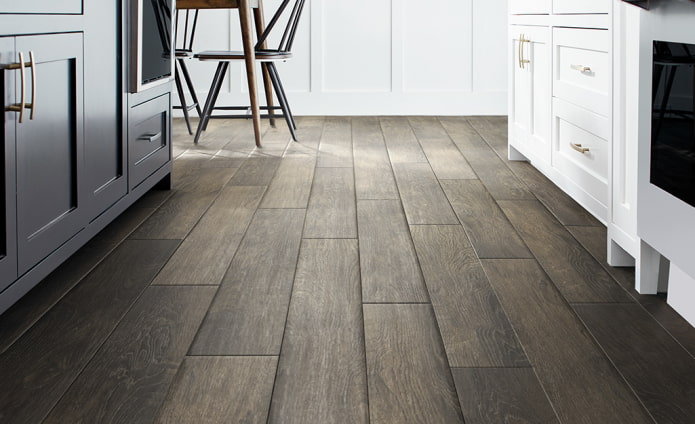
 10 practical tips for arranging a small kitchen in the country
10 practical tips for arranging a small kitchen in the country
 12 simple ideas for a small garden that will make it visually spacious
12 simple ideas for a small garden that will make it visually spacious

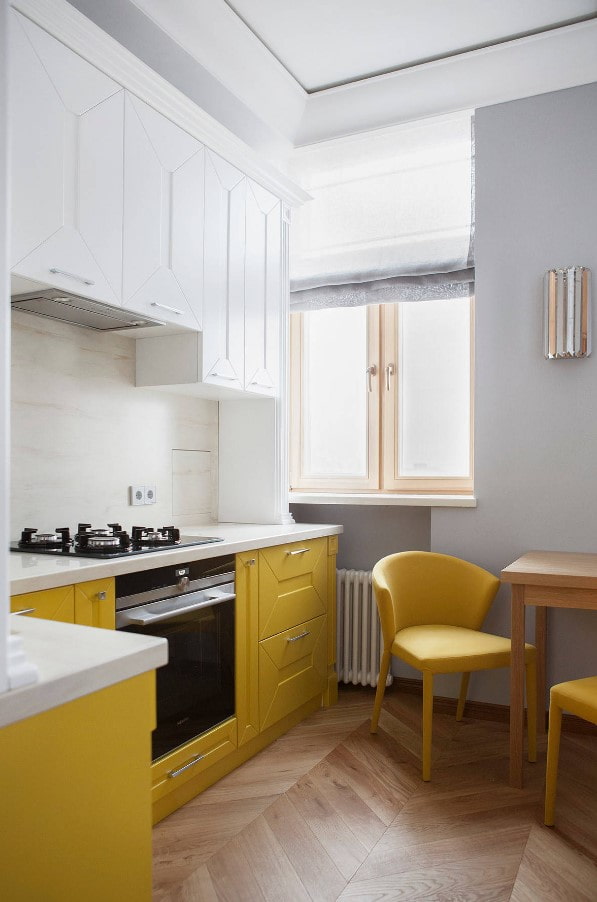
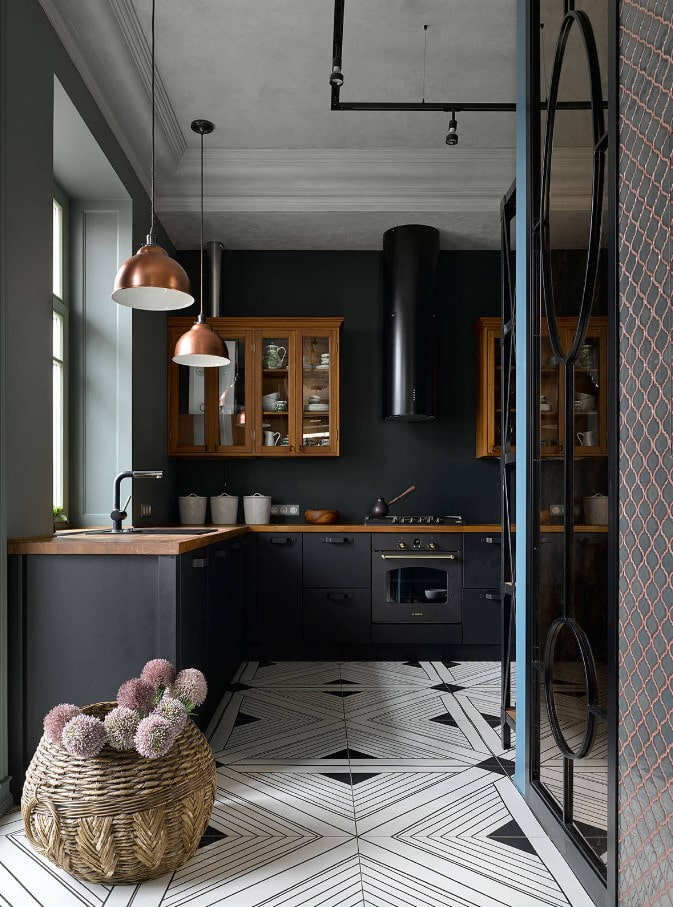
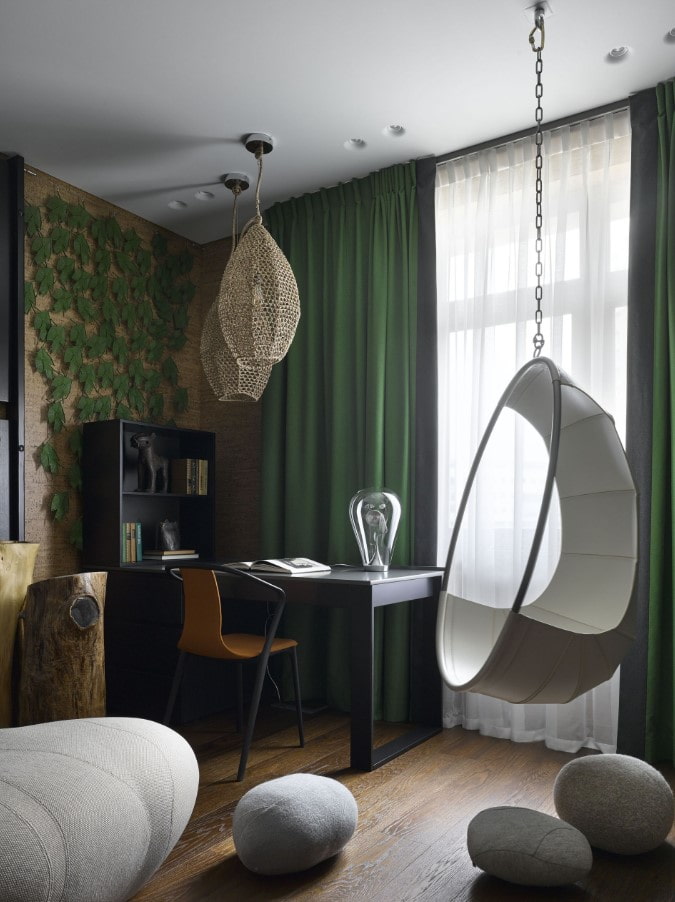
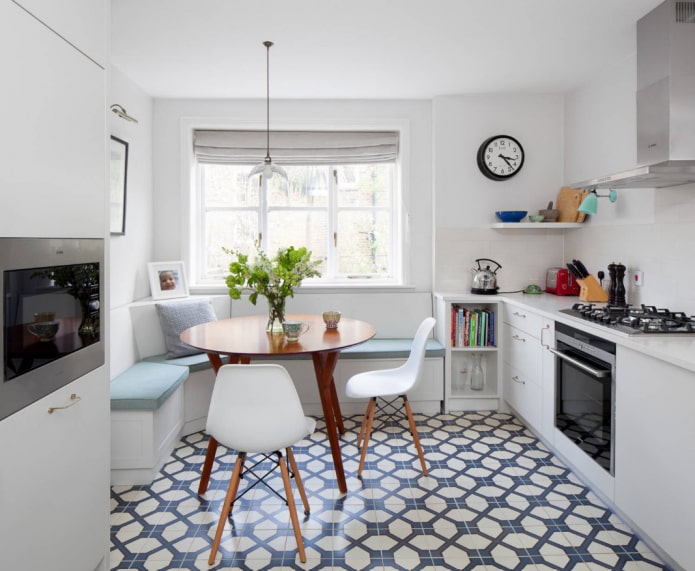
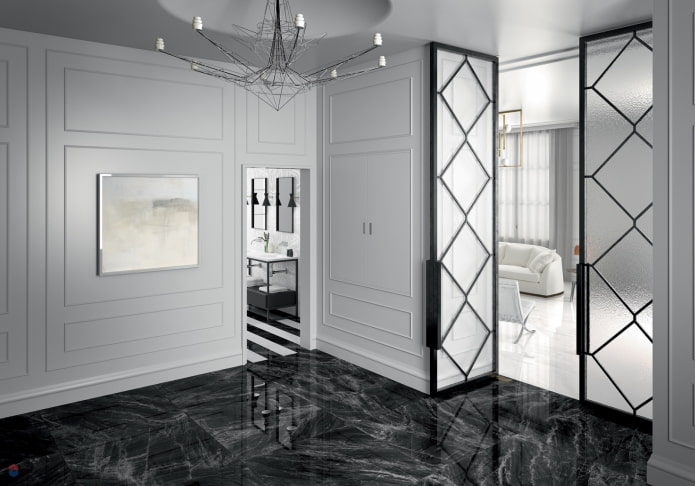
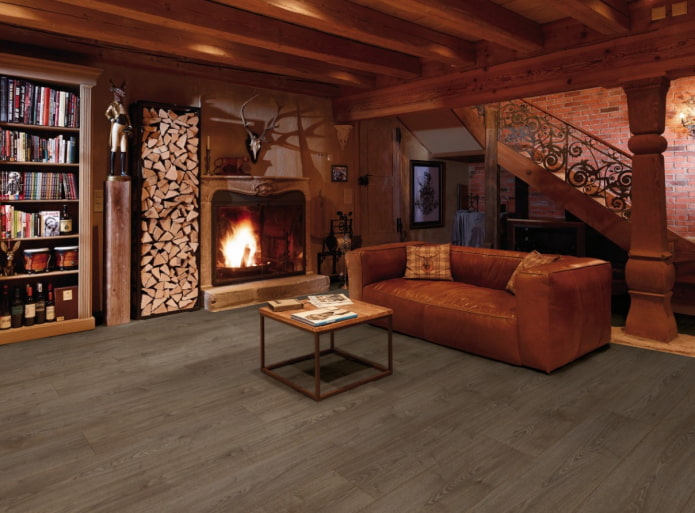
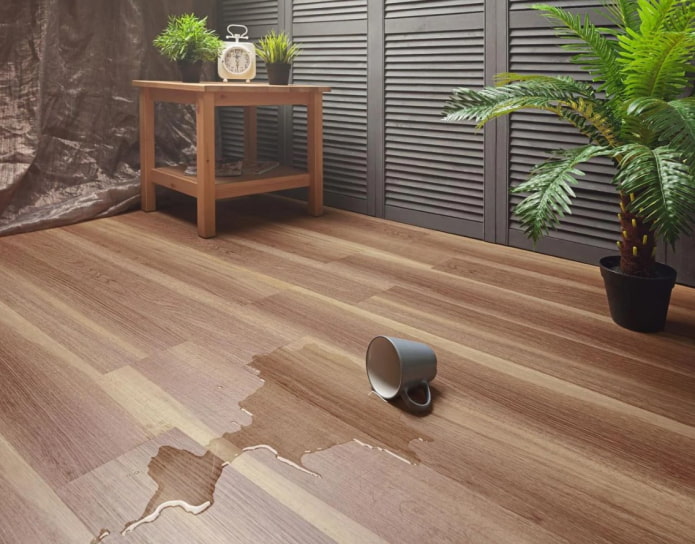
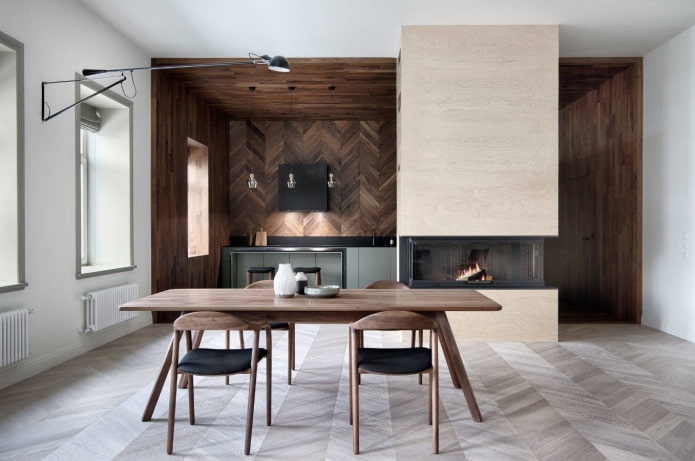
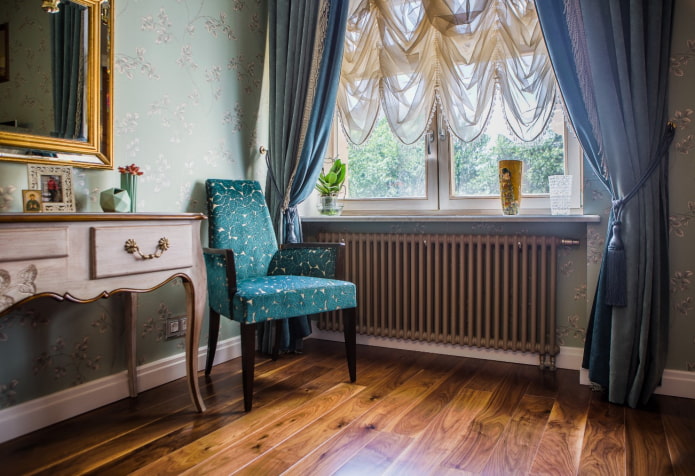
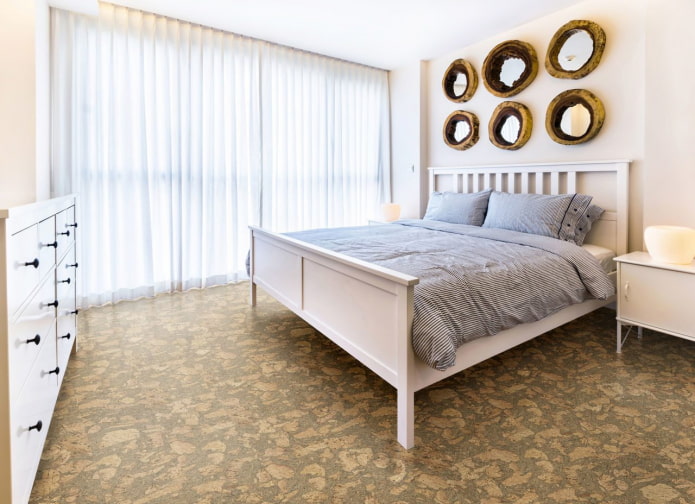


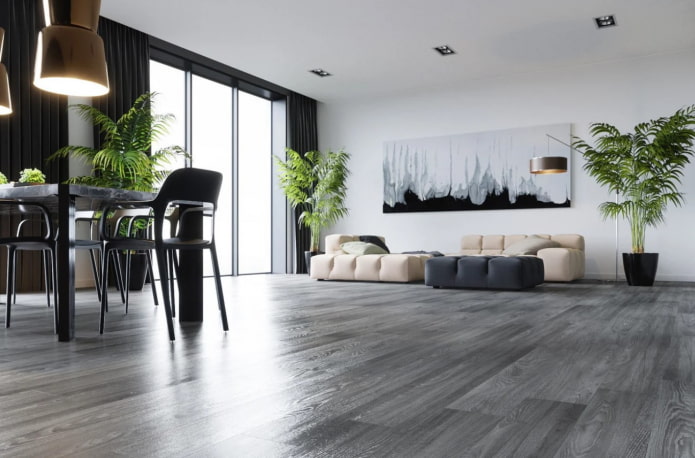

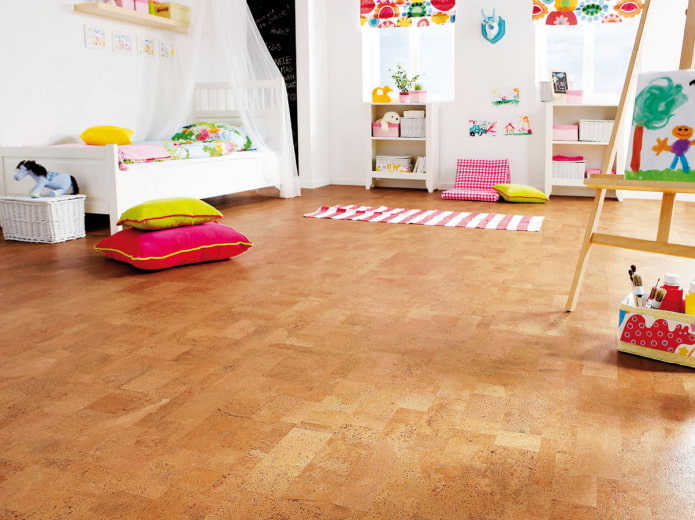
 What is better not to do it yourself during the repair?
What is better not to do it yourself during the repair? Bloated linoleum: how to fix it without disassembly
Bloated linoleum: how to fix it without disassembly The worst decisions in apartment renovation
The worst decisions in apartment renovation  Installation of ceiling tiles: choice of materials, preparation, order of work
Installation of ceiling tiles: choice of materials, preparation, order of work How to glue a ceiling plinth to a stretch ceiling?
How to glue a ceiling plinth to a stretch ceiling? Ceiling plinth for stretch ceiling: types, recommendations for selection
Ceiling plinth for stretch ceiling: types, recommendations for selection